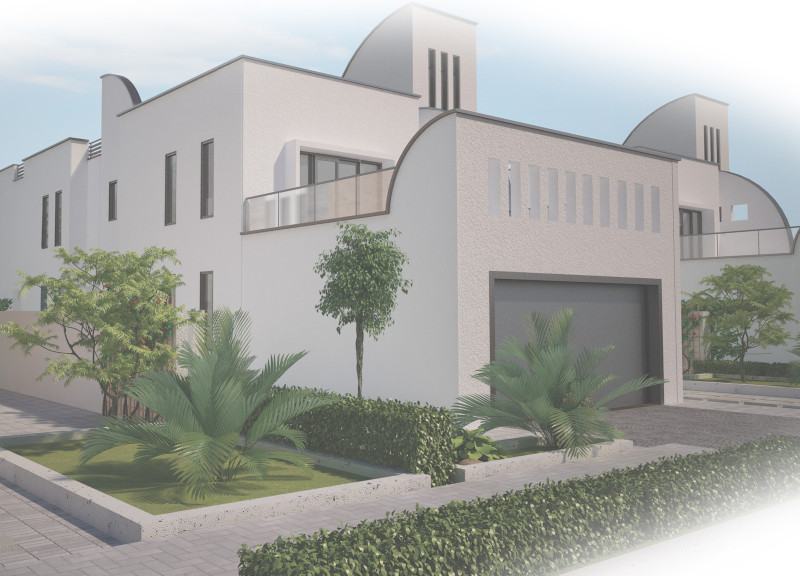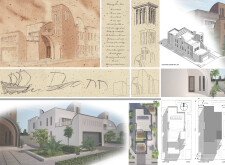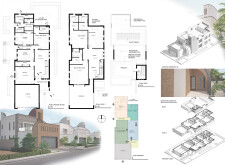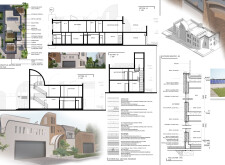5 key facts about this project
## Overview
The project located in [insert location] presents a contemporary interpretation of traditional architectural elements, blending modern design with functional living spaces tailored to the regional context. Its adaptive design strategy incorporates cultural nuances while emphasizing sustainability through innovative materials and construction techniques.
## Architectural Elements
### Exterior Design
The exterior façade features a combination of curved and flat geometries, resulting in a visually striking profile that balances modern and traditional aesthetics. Key design aspects include curvilinear roofs that deliver a soft silhouette and practical functionality, as well as vertical features like spires that enhance ventilation and height. The textured walls, constructed from brick and stucco, create a rich tactile experience while contributing to structural integrity and visual warmth.
### Spatial Organization
The spatial layout efficiently delineates public and private domains to enhance user experience. Public areas comprise comfortable living and dining spaces that open into exterior gardens, promoting interaction. In contrast, private zones, such as bedrooms, are strategically oriented to ensure both privacy and a connection to nature through expansive windows and balconies. Additionally, the design incorporates adaptable areas allowing for future extensions to accommodate evolving needs.
### Landscaping
A significant aspect of the project is its landscaping, which uses native plantings to minimize water consumption while supporting local biodiversity. The outdoor spaces are designed to foster community interaction, featuring shaded gathering spots that harmonize with the architectural forms and enhance the overall aesthetic.
## Design Outcomes
The integration of sustainable materials and practices throughout the design aligns with contemporary living philosophies focused on wellness and environmental responsibility. This project exemplifies a thoughtful coexistence between architectural innovation and cultural identity, contributing to the narrative of modern living within its locale.

























































